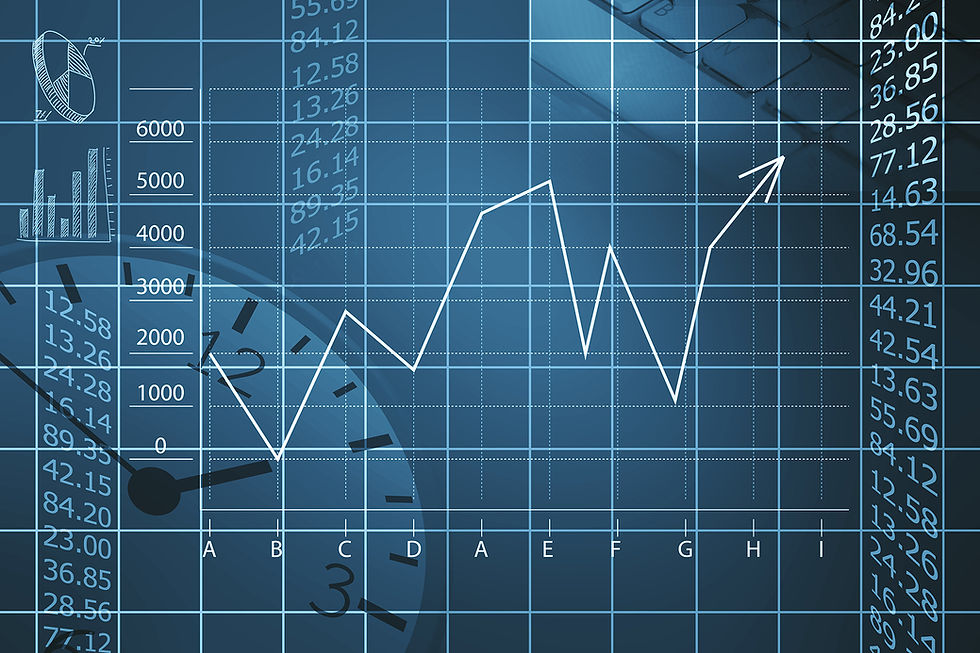Stocks rise as investors show optimism over Gilead coronavirus treatment and U.S. reopening
- yibrokeratl
- 2020년 4월 17일
- 3분 분량
최종 수정일: 2020년 4월 24일

Published: April 17, 2020 at 12:35 p.m. ET
By William Watts and Chris Matthews
Stocks were higher Friday afternoon, but off their best levels of the day, after investor sentiment was buoyed by news of a possible treatment for the COVID-19 disease and after the Trump administration announced guidelines for reopening the economy late Thursday.
What are major indexes doing?
The Dow Jones Industrial Average DJIA, 1.73% was up 351 points, or 1.5%, at 23,889, while the S&P 500 f SPX, 1.62% advanced 42 points, or 1.5%, to 2,842. The Nasdaq Composite COMP, 0.53% was up 34 points, or 0.4%, at 8,566. / At session highs, the Dow rose 612.56 points, or 2.6%, the S&P gained 62.61 points, or 2.2% and the Nasdaq was up 137.94 points, or 1.6%.
What’s driving the market?
Support for stocks was attributed to a report from health-care media site Stat News that indicated promising results for a drug used to treat COVID-19, the disease that has claimed more than 140,000 lives around the globe and forced the closure of much of the U.S. and global economy in an effort to contain it. University of Chicago Medicine researchers saw “rapid recoveries” in 125 patients suffering from COVID-19 who were taking Gilead Sciences Inc .’s GILD, +7.52% experimental drug remdesivir as part of a clinical trial, according to a Thursday night report.
The results have grabbed the attention of Wall Street because there is no vaccine for the potentially fatal illness, and any signs of progress toward a treatment have the potential to elicit euphoria from investors who have been rocked by the economic shock that has resulted from efforts to slow down the spread of the contagion.
“The market is fueled by hope and optimism today—hope for a vaccination and optimism around reopening the economy,” Mike Loewengart, managing director of investment strategy at E-Trade wrote in an email. “ That said, these are relatively fragile indicators as testing remains underway and areas hard hit like New York and New Jersey continue to operate under strict stay-at-home orders.”
More than 22 million Americans have lost their jobs over the past month, according to weekly data from the U.S. Labor Department, likely lifting the unemployment rate to around 15% from 3.5% in February.
However, even though remdesivir is considered a front-runner to help treat COVID-19, the results represent a very small sample and aren’t based on full clinical-trial data.
“If we’re playing devil’s advocate to the bullish reaction—an important word here ‘is ‘early’. It was a small trial and there was no control group so there’s plenty of room for error,” said Jasper Lawler, head of research at London Capital Group, in a note.
Optimism around a treatment came as President Donald Trump late Thursday outlined a three-phase process to restarting the U.S. economy that puts the onus on states.
“America wants to be open, and Americans want to be open,” Trump told reporters at the White House on Thursday, adding later, “We must have a working economy, and we want to get it back very, very quickly.”
There is no direct timetable assigned to the guidelines, but under the rst phase, movie theaters, restaurants, sports venues, places of worship, gyms and other venues could reopen with social distancing guidelines in place.
Meanwhile, nonessential travel, bars, and schools could be restarted with limitations in the second phase; while further restrictions would be slowly phased out in the nal stage.
Meanwhile China reported that its economy contracted by 6.8% in the rst three months of the year compared with a year earlier, the country’s rst such drop since Beijing began reporting quarterly gross domestic product in 1992. The data, reecting the hit to the economy suffered as the China dealt with the coronavirus outbreak earlier this year, was seen underlining the economic pain being suffered in the U.S. and Europe as they attempt to contain the outbreak.
An index of leading economic indicators showed a record 6.7% drop in March, the latest round of grim data reecting the toll of the coronavirus. On Thursday, data showed more than 5 million rst-time claims for jobless benets last week, while gures earlier in the week showed a more-than-8% drop in March retail sales.
What are other markets doing?
Nearby U.S. oil futures CL.1, -8.35% plunged to an 18-year low, while deferred contracts CLM20, -1.61% rose, underscoring concerns about rapidly shrinking storage availability thanks to a collapse in demand and the recently ended price war between Saudi Arabia and Russia.
Gold futures GCM20, -1.75% retreated and Treasury yields TMUBMUSD10Y, 0.608% rose as investors shunned traditional havens in favor of stocks and other risky assets. Bond yields rise as prices fall.
European stocks were solidly higher, with the STOXX 600 Europe Index SXXP, +2.63% closing 2.6% higher.
.jpg)



댓글